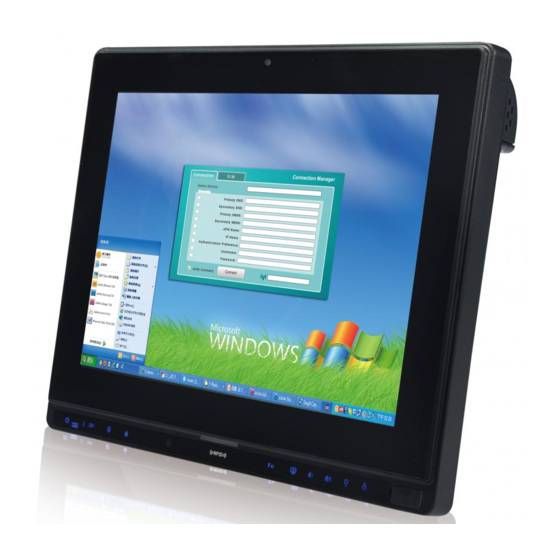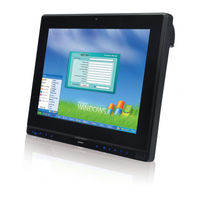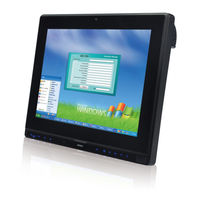
User Manuals: IEi Technology AFL2-12A-HM65 Series PC
Manuals and User Guides for IEi Technology AFL2-12A-HM65 Series PC. We have 3 IEi Technology AFL2-12A-HM65 Series PC manuals available for free PDF download: User Manual
IEI Technology AFL2-12A-HM65 Series User Manual (186 pages)
Brand: IEI Technology
|
Category: Touch Panel
|
Size: 5 MB
Table of Contents
-
-
-
Applications17
-
Features17
-
-
-
-
Front Panel18
-
-
-
-
Rear Panel21
-
-
-
Dimensions28
-
-
-
-
Monitor32
-
-
-
-
Audio33
-
-
-
System Power34
-
Power Mode34
-
3 Unpacking
35-
Unpacking36
-
Packing List36
-
-
-
-
-
Arm Mounting51
-
-
-
Main76
-
Advanced77
-
USB Devices83
-
-
H/W Monitor88
-
-
Iei Feature92
-
Chipset93
-
Boot102
-
Security104
-
User Password104
-
Restore Defaults106
-
Save & Exit106
-
-
-
-
Factory Restore165
-
-
-
Backup System166
-
-
-
Manual168
-
-
-
D Watchdog Timer
180-
Example Program182
-
Advertisement
IEI Technology AFL2-12A-HM65 Series User Manual (193 pages)
Flat Bezel Panel PC with Intel Sandy Bridge Mobile CPU, TFT LC, Wi-Fi, TouchScreen, RFID Reader, GbE LAN, RS-232/422/485, Camera, RoHS
Brand: IEI Technology
|
Category: Touch Panel
|
Size: 7 MB
Table of Contents
-
Introduction15
-
Features17
-
Applications17
-
Front Panel18
-
Rear Panel22
-
Dimensions27
-
Monitor30
-
Audio31
-
System Power31
-
Power Mode31
-
Unpacking33
-
Unpacking34
-
Packing List34
-
Installation38
-
Arm Mounting46
-
Removing the66
-
Introduction74
-
Using Setup74
-
Getting Help75
-
Main76
-
Advanced77
-
H/W Monitor88
-
Iei Feature92
-
Chipset93
-
Boot102
-
Security104
-
Save & Exit106
-
Software Drivers108
-
Product Disposal140
-
Cleaning Tools141
-
Factory Restore172
-
Backup System173
-
Manual175
-
E Watchdog Timer187
IEI Technology AFL2-12A-HM65 Series User Manual (141 pages)
Flat Bezel Panel PC with 2nd generation Intel Core i7/i5/i3 or Celeron CPU, Wi-Fi, Touchscreen, RFID Reader, GbE LAN, RS-232/422/485, Camera
Brand: IEI Technology
|
Category: Touch Panel
|
Size: 3 MB
Table of Contents
-
-
Introduction15
-
Overview16
-
Features17
-
Applications17
-
Front Panel18
-
Rear Panel22
-
Dimensions27
-
Monitor30
-
Audio31
-
System Power32
-
Power Mode32
-
Unpacking33
-
Unpacking34
-
Packing List34
-
Installation38
-
Arm Mounting46
-
Removing the66
-
Introduction74
-
Using Setup74
-
Getting Help75
-
Main76
-
Advanced77
-
USB Devices83
-
H/W Monitor88
-
Iei Feature92
-
Chipset93
-
Boot102
-
Security104
-
User Password104
-
Save & Exit106
-
Restore Defaults106
-
Software Drivers108
-
Driver Download110
-
Product Disposal130
-
Cleaning Tools131
-
Advertisement


